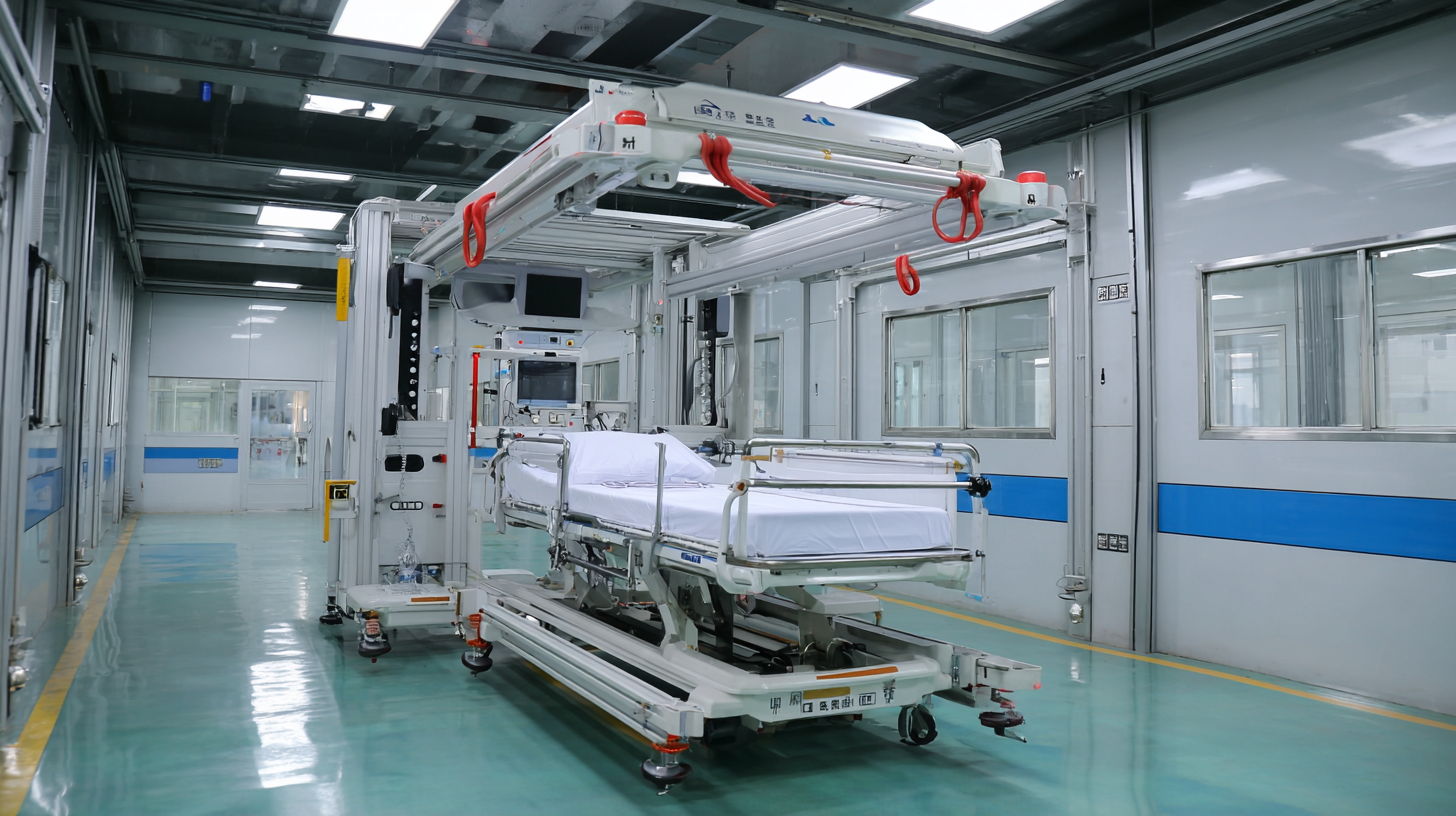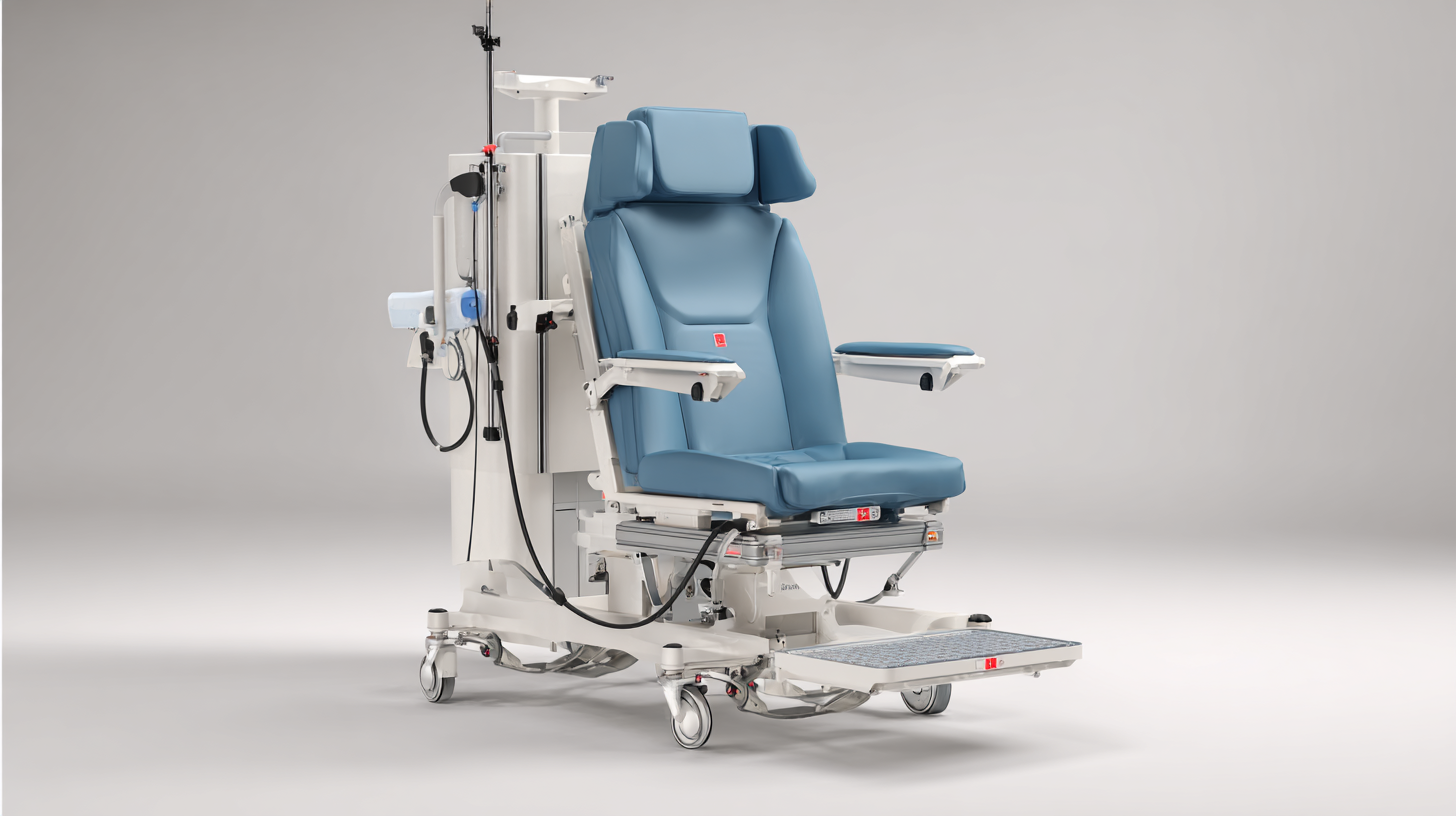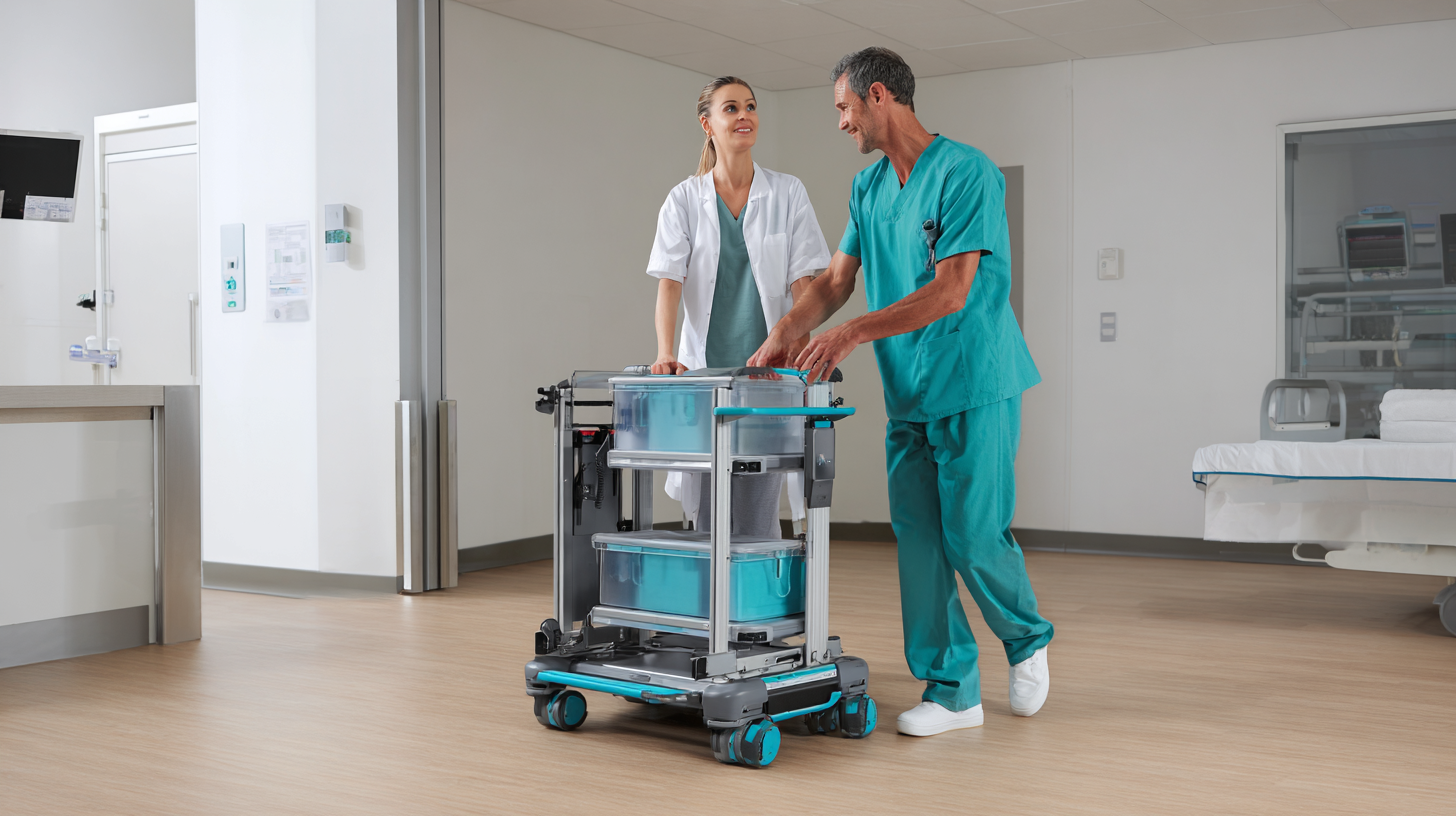How to Choose the Best Mobile Patient Lift for Your Healthcare Setting
 In the ever-evolving healthcare landscape, ensuring the
safety and comfort of patients during
transfers is paramount. Mobile patient lifts have become a critical component in providing
high-quality patient care, significantly reducing the risk of injury for both patients and caregivers.
According to the American Nurses Association, over 30% of
healthcare workers experience back injuries, often due to improper lifting techniques. The introduction
of mobile patient lifts not only enhances patient mobility but also promotes a safer working environment, aligning with the National Institute
for Occupational Safety and Health recommendations. As the demand for effective and efficient patient handling
grows, understanding how to choose the best mobile patient lift for your healthcare setting becomes
essential. This blog delves into various factors, including weight capacity, ease of use,
and regulatory certifications, to guide healthcare providers in making informed decisions
that ultimately improve patient care and staff safety.
In the ever-evolving healthcare landscape, ensuring the
safety and comfort of patients during
transfers is paramount. Mobile patient lifts have become a critical component in providing
high-quality patient care, significantly reducing the risk of injury for both patients and caregivers.
According to the American Nurses Association, over 30% of
healthcare workers experience back injuries, often due to improper lifting techniques. The introduction
of mobile patient lifts not only enhances patient mobility but also promotes a safer working environment, aligning with the National Institute
for Occupational Safety and Health recommendations. As the demand for effective and efficient patient handling
grows, understanding how to choose the best mobile patient lift for your healthcare setting becomes
essential. This blog delves into various factors, including weight capacity, ease of use,
and regulatory certifications, to guide healthcare providers in making informed decisions
that ultimately improve patient care and staff safety.
Understanding the Importance of Mobile Patient Lifts in Healthcare Settings
Mobile patient lifts play a critical role in enhancing the quality of care in healthcare settings. According to a study published in the Journal of Patient Safety, hospitals that employ assistive devices, such as mobile patient lifts, report a 50% reduction in staff injuries related to patient handling. These devices not only ensure the safety of healthcare providers but also improve the overall experience for patients, facilitating smoother transfers and reducing the risk of falls.
The implementation of mobile patient lifts has become increasingly important as the population ages and the prevalence of mobility issues rises. The World Health Organization indicates that by 2050, the global population aged 60 years and older will reach 2 billion, highlighting the necessity for effective mobility solutions in healthcare. A recent report from the American Nursing Association emphasizes that adequate lifting equipment leads to a 30% increase in patient satisfaction scores, underscoring the dual benefits of safety and patient-centered care. As healthcare settings strive for excellence in both staff welfare and patient outcomes, the strategic selection of the right mobile patient lift becomes imperative.
Key Features to Consider When Selecting a Mobile Patient Lift for Your Needs
When selecting a mobile patient lift for your healthcare setting, it is crucial to consider key features that will enhance both patient safety and caregiver efficiency. Begin by assessing the lift’s weight capacity and range of motion. A lift that can accommodate a diverse range of patient sizes is essential, as it ensures usability in various scenarios. Additionally, look for models equipped with adjustable straps or slings that provide secure support for patients. This is particularly important in preventing slippage and enhancing patient confidence during transfers.

Another significant aspect to contemplate is the mobility and ease of use of the patient lift. Opt for a model with smooth maneuverability, which allows caregivers to navigate tight spaces effortlessly. Consider lifts with features like swivel casters and ergonomic handles that can reduce strain on the user while ensuring efficient patient handling. Furthermore, some modern lifts may come with additional functionalities such as built-in safety alarms or battery-powered operations, which can be beneficial in emergency situations. By prioritizing these features, you can create a safer and more efficient healthcare environment tailored to the needs of both patients and caregivers.
Quality Assurance: The Role of "Made in China" in Global Healthcare Equipment
In recent years, the "Made in China" label has increasingly become synonymous with quality in the global healthcare equipment market. According to a report from the International Trade Administration, China's medical device market is projected to reach $97 billion by 2023, largely driven by innovations and improved manufacturing practices. This transformation has enabled Chinese manufacturers to meet and often exceed international quality standards, creating a ripple effect throughout the industry. With healthcare facilities seeking reliable patient lifts, they can increasingly trust Chinese products to deliver both functionality and durability.

Quality assurance in healthcare equipment is paramount, as improper lifting can lead to serious injuries for both patients and caregivers. A study conducted by the Journal of Patient Safety cited that nearly 60% of patient handling injuries could be prevented with the use of appropriate lifting technologies. Chinese manufacturers, through stringent quality control processes and adherence to international certifications like ISO 13485, are now providing mobile patient lifts that align with best practices. The integration of cutting-edge technology and materials ensures these lifts not only facilitate safe patient transfer but also enhance overall care efficiency in various healthcare settings. Consequently, as healthcare institutions prioritize safety and reliability, the "Made in China" designation has become a mark of trust and innovation.
Evaluating Manufacturer Reputation and Customer Feedback for Patient Lifts
When selecting a mobile patient lift for a healthcare setting, evaluating the manufacturer's reputation and customer feedback is crucial. A reputable manufacturer often demonstrates a commitment to quality and safety, which are paramount when handling patients with varying mobility needs. Researching the company’s history, certifications, and market presence can provide insights into their reliability. Look for manufacturers with a proven track record of producing durable and efficient lifting devices that have passed necessary quality assurance tests.
Customer feedback serves as an invaluable resource in this selection process. Prospective buyers should explore reviews and testimonials from other healthcare professionals who have used the lifts in similar environments. Pay attention to comments regarding usability, patient comfort, and system reliability. Understanding real-world experiences can highlight potential issues and advantages that specifications alone might not reveal. Engaging with online forums and professional networks can further enhance this research, fostering discussions that lead to informed decisions in choosing the most suitable mobile patient lift for your facility.
Cost vs. Quality: Making Informed Decisions for Your Healthcare Facility
When choosing a mobile patient lift, healthcare facilities must carefully weigh cost against quality to ensure optimal patient care and staff safety. A study by the American Nurse Association indicates that nearly 50% of patient handling injuries are linked to inadequate equipment. This highlights the importance of investing in high-quality lifts that not only meet safety standards but also provide reliability and ease of use. While the upfront costs of advanced lifts can be higher, the long-term savings are significant, including reduced injury compensation claims, lower worker's compensation insurance costs, and improved staff retention.
Moreover, according to the Healthcare Cost and Utilization Project (HCUP), hospitals that prioritize high-quality equipment see a notable decrease in patient transfer-related incidents, which can lead to better patient outcomes and satisfaction rates. Selecting a lift that adheres to recognized standards, such as those established by the FDA, ensures that the facility is acquiring a reliable tool that enhances operational efficiency. By prioritizing quality over initial cost, healthcare providers can create a safer environment for both patients and caregivers, ultimately leading to a more sustainable operational model.
